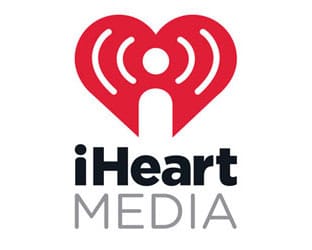The nation’s No. 1 audio content creation and distribution company early Thursday reported its financial results for the final quarter of last year. And, like other broadcast media companies, iHeartMedia saw its share of struggles.
The dip in revenue, along with a significant decline in year-over-year net income, led the company to register a $1.1 billion net loss for the full year of 2023, widening a full-year net loss seen in 2022.
Yet, it was a better-than-expected fourth quarter for iHeartMedia, and that’s the key takeaway when looking closely at its performance.
For the final three months of 2023, iHeartMedia’s revenue dipped by 5.2%, moving to $1.066 billion from $1.126 billion. Operating income fell to $79.78 million, from $172.84 million, while adjusted EBITDA came in at $208.21 million — a decline from $315.65 million.
Add it all up, and iHeartMedia’s net loss attributable to the company dipped to $13.12 million from $79.88 million; earnings per share were not shared by iHeartMedia.
However, the adjusted EBITDA and revenue guidance ranges were met in the quarter, even with a more uncertain marketplace, CEO Bob Pittman said during the company’s earnings call for analysts and investors. Unlocking programmatic and trading revenue is on the up trend, he said in prepared remarks at the start of the 8:30am Eastern call. “We have a new tool to fuel that, which is AI,” Pittman said.
On a positive note, iHeartMedia’s revenue beat the consensus estimate of $1.04 billion offered by 7 analysts who cover the company.
In pre-market trading, IHRT, which trades on Nasdaq, was up 5.7% to $2.40.
2024: ‘A RECOVER YEAR’
With strong political advertising revenue in 2022, comparisons between the last three months of that year to the fourth quarter of 2023 is a bit unfair.
That said, Pittman and COO/CFO Rich Bressler expressed confidence that the year ahead will be stronger than last year.
Could Digital segment revenue be the engine, or the cherry on top, for iHeart? In Q4, a 5.5% increase in revenue was seen, moving to $317.7 million from $301.09 million. Yet the multiplatform group’s contribution to the bottom line is more than double that of Digital, and the multiplatform group revenue fell to $684.03 million, from $732.83 million.
This 6.7% decline in dollars year-over-year in Q4 is emblematic of the radio industry’s struggles to offset core ad revenue declines at legacy linear channels as digital success continues.
Meanwhile, the “Audio & Media Services” group revenue was also a struggle, sliding by 28.5% to $67.57 million from $94.59 million. The Audio & Media Services group includes television revenues, which “has greater peaks and troughs due to political advertising,” Bressler explained on the call. Within this group is Katz Media Group and RCS Sound Software. The company is also the owner of Media Monitors, Mediabase 24/7 and Inside Radio.
Broadcast Radio revenue was broken out by iHeart, and in Q4 it declined by 6.9% to $484.67 million, from $520.73 million.
Podcast revenue grew by 16.6% to $131.67 million, from $112.95 million.
A JANUARY ANOMOLY
While revenue in January was down 8%, Bressler shared that momentum is building in February and March, with pacing up in the low-single digit range. This means that iHeartMedia will be “slightly better than down 1% for the quarter,” with expectations ranging from flat from down 2%.
Bressler added that Q2 2024 is pacing up in the low-single digit range.
To start the Q&A session with financial analysts, veteran Wall Street figure Jessica Reif Ehrlich of BofA Securities asked about podcasting. “The marketplace has gotten a bit more rational,” Pittman said, noting that “we’ve gotten back to very clear basis,” with huge talent payouts and big contract signings fading.
Bressler commented on the leverage ratio, and noted that the company expects to make “significant progress” this year to get to 4x.
The next question came from Steven Cahall of Wells Fargo Securities, who wanted to know more about the ad growth being seen today. Is national improving? What categories are doing well? Pittman wouldn’t divulge, as Bressler shared that no category is more than 2% of our ad revenue, noting the company’s “diversity” in its advertising segments.
This differs from peers such as Audacy Inc., which compared to other radio industry companies has been overexposed to the Automotive.





